Green Beans are popular plants and grow as Bushes or vines. It is usually easy to handle Bushes; they are only 1 to 2 feet tall and mature earlier. Pole Beans are 6 to 8 feet long and require a trellis for support. They grow more slowly but produce more Beans per plant. Green Bean crops have two growing styles.

The first one is Bush Beans that grow in a compact space, while the second one is Poles that grow when they climb the vines. Both Pole & Bush Beans need very similar conditions to grow. Below are some of the questions about growing Green Beans.
Growing Green Beans from seed to harvest
How long do Bean plants take to grow full?
- On average, Bean plants take a little less than two months to produce Beans and mature completely, but different cultivars vary in maturity. Depending on the cultivar and climate, this time can vary from 45 to 75 days.
- Bush Beans are usually ready for harvesting within 50 to 55 days, while the Poles can take 55 to 60 days. Bean pods are ready for harvesting when four to six inches long and slightly stronger before the Beans protrude through the skin. Then, gently pull the Beans from the plant, ensuring not to tear the flowers.
- When the Beans are ready for harvesting, the seeds inside the pod are not quite full-sized. Harvest the Green Beans about two weeks after the full size. The dates of the original crop may vary depending on the weather and other factors. Bean plants keep blooming until the Beans are harvested before maturity.
What is the lifespan of a Green Bean plant?
Most Beans are garden annuals, but some can be grown as perennial and produce a fantastic crop every season. The Green Bean plant life cycle lasts for a year and is active from late spring till the temperature drops in the fall. Therefore, the perfect time to plant Green Beans outdoors is when the risk of frost has passed and the soil temperature is at 19°C or warmer.
Do Green Bean plants only produce once?
- Green Beans produce most of their crop at once, although plants will continue to grow if you keep them well harvested. Green Beans need full sun and are tolerant of different soil conditions.
- When the Beans are large enough to eat, pull the pods from the plant and harvest them, taking care not to break the stem. The Beans will bloom twice and provide another crop. Small Beans are softer. Bush Beans often come at once, so they stagger their plantation every two weeks to get the crop. The Poles need their vines to grow; if you keep harvesting, they will produce for a month or two.
In case you missed it: Soil Preparation for Green Bean Plants: Best Soil Mix, pH, Compost, and Recipe
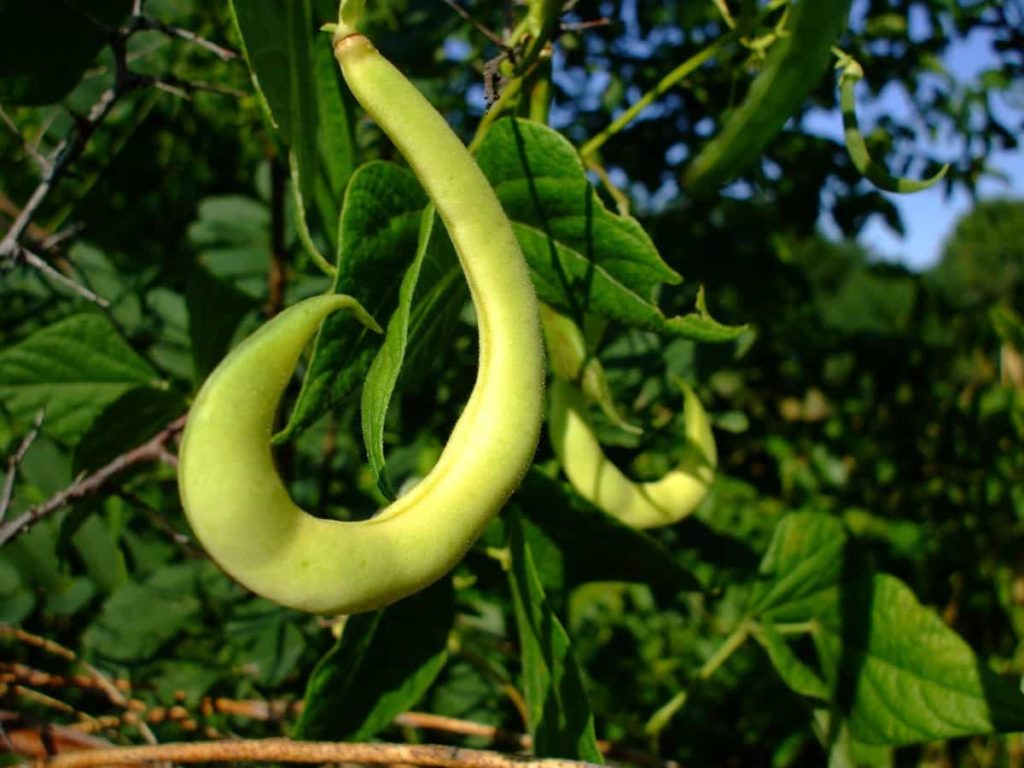
When should I start my Green Beans from seed?
- In spring, plant Green Beans only after all the risk of frost has passed. Use 113 to 226 grams of seed for every 100 feet row of Green Beans. Green Beans are a hot weather crop that can be planted as soon as the frost threat passes in spring. Green Beans grow best when the air temperature ranges from 19 to 30°C. Soil temperature should be at least 13°C for an excellent seed to grow.
- Do not plant too early, as cold, moist soil will delay germination and can cause seeds to rot. Soil should be hot seeds can rot if it’s not hot enough, especially untreated seeds. Best soil temperature for germination: 21-32°C. Seeds should sprout in 8 to16 days, depending on the conditions.
- Sow seeds indoors for transplant one or two weeks after the last frost. After direct sowing of the crop of Bush Beans in the garden, from mid to late summer every two weeks, if the Beans are picked regularly, the Pole Beans continue to produce Beans.
Why do my Bean plants have no Beans?
Bean pods will not be formed if the soil becomes too dry between irrigations or rains. Mulch can help, but hot, windy days can dry plants even when the soil is moist. Wind protection by taller crops can be an excellent addition to mulch. When temperatures are too high, Bean flowers will fall. The scorching heat makes it difficult for the Bean plant to keep itself alive, and it will leave its flowers. The Bean plants in the soil, which are very wet, will bloom but will not produce Beans.
Why are my Green Beans so small?
- While all growing Beans require full sun and fertile, well-draining soil for the best production, too much sun or more temperature can harm the Bean plot. High temperatures during parts of the growing season can cause Bean pods that are very small.
- Plants can show discoloration and poor growth. Ensure the Green Beans are planted in well-drained soil, as excessive moisture is an ideal environment for fungus development. Stem anthracnose is a fungus that usually causes Bean problems in severe wet conditions.
- Cold temperatures are among the most common causes of failure in Bean seeds. Temperatures below 21°C are sprouting slowly, while temperatures below 15°C can cause seeds to fail. In addition, cool temperature combined with very moist soil can cause seeds to rot.
Do Green Beans like full sun?
Green Beans need seven to eight hours of full sun daily. However, high temperatures can cause flowers to fall from your Green Bean plants, so use row covers to protect plants from high heat. Most of the Beans, except the fava Beans, are cold sensitive and thrive when the temperature is 21 to 27°C and the soil temperature is at least 19°C.
What are the stages of a Bean plant?
The life cycle of a Bean plant has four important stages: seeds, germination, leaf growth, and flowers. A new plant is housed in the seed. In the germination process, the baby plant comes out of the seed hull. Leaf growth begins when the seedlings grow their own real sets of adult leaves (unlike the structure of immature early leaves). Flowering stages show that the plant has completely matured and is ready to start reproducing.
In case you missed it: Best Fertilizer for Green Beans: Homemade, Natural, Organic, NPK, Compost Manure, and Schedule
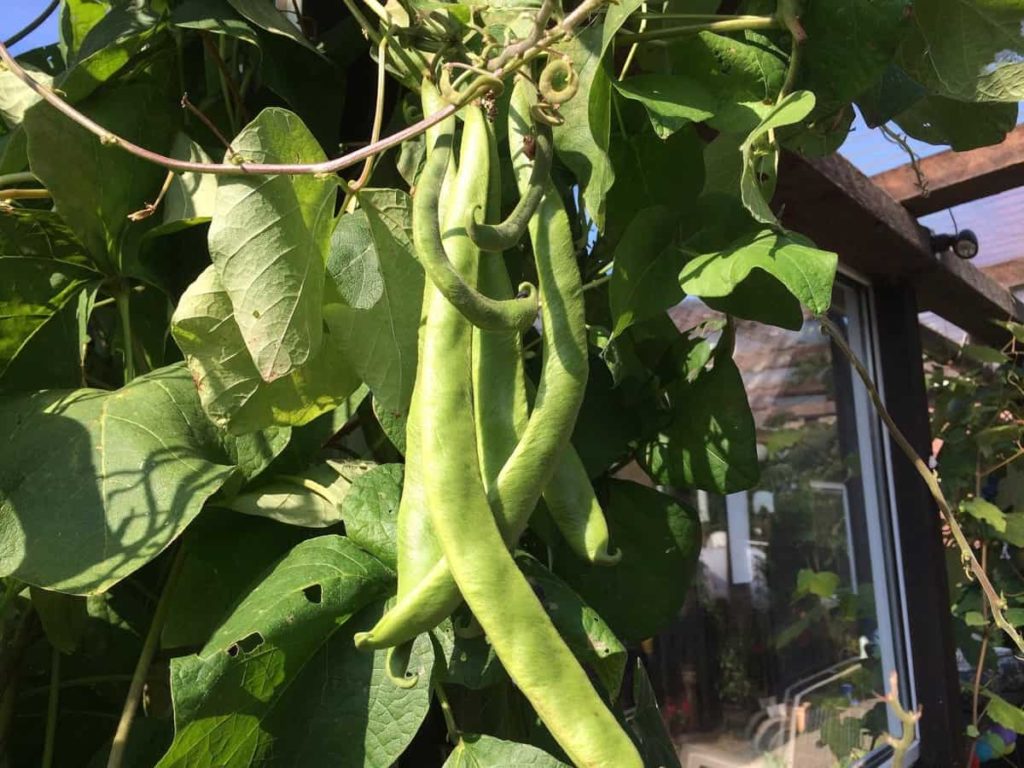
Should you prune Green Bean plants?
- There is no need to prune out Bush Breen Beans as part of their regular maintenance. But you can remove any damaged or discolored leaves to look good.
- Before cutting or pinching the Pole Beans at the end of the growing season, make sure it sets the Beans, and then use a sharp scissor or shears to cut the central stem back to the desired height. Cut any Pole Beans taller than their support. Remember that new sets of flowers start growing whenever you prune the vines.
Should Beans be started indoors?
- Place the Beans in a bowl or cup and fill it with water. Then, let the Beans soak in water at room temperature overnight. This will help soften the Beans’ outer shells and make it easier for plants to sprout.
- On the other hand, starting your Beans indoors gives you a couple of extra weeks of growth early in the season. Even with something as fast-growing as Beans, being able to harvest two or three weeks in advance makes many gardeners happy, especially when surprising plantations of fixed varieties.
- Raised beds are ideal, but Green Beans can also be grown in pots and planters. For Bush Beans, choose a large window box or a pot with a diameter of at least 15 inches. For Poles, the container should be at least 18 inches in diameter.
How do you know when Beans are ready to harvest?
- Picking Beans stimulate your plants to produce more and give you a long crop duration. Plan to harvest every 2 to 3 days once the Bean season starts. Harvest Green Beans when they are 4 to 7 inches long and pencil width. Most importantly, they should be strong to touch and have no apparent bulge. Hold the Bean with one hand where it connects to the bull.
- Harvesting Beans when they are soft or Green is perfectly fine. The best time to pick Beans for this procedure is after the inside Beans have been prepared outwardly before the pod dries up.
How often should Green Beans be watered?
- Common Beans require 1 inch of water every week. Use a drip irrigation system for extra water to avoid spraying on leaves, which can lead to soil-generated diseases. To determine whether plants need water, stick your finger about 1 inch into the soil near the base of the plant.
- Typically, Green Beans require about 1 to 1.5 inches of water a week, or about 2.5 to 3.8 centimeters of water. Therefore, plants should be watered daily and preferably in the morning. This is important because they are ineffective due to water vapor in the middle of the day.
- Creating Bean pods also requires photosynthesis energy and a generous water supply; plants use about 1/2 inches of water daily during flower and pod growth. As a result, plants should be given water daily to replace the water uptaken by the root system during development. Keep both Bush and Pole Beans well in water, but be careful, as Beans tend to rot in the ground if given more water. To avoid this, let the topsoil dry between waterings.
In case you missed it: Top 30 Vegetables To Grow In A Greenhouse
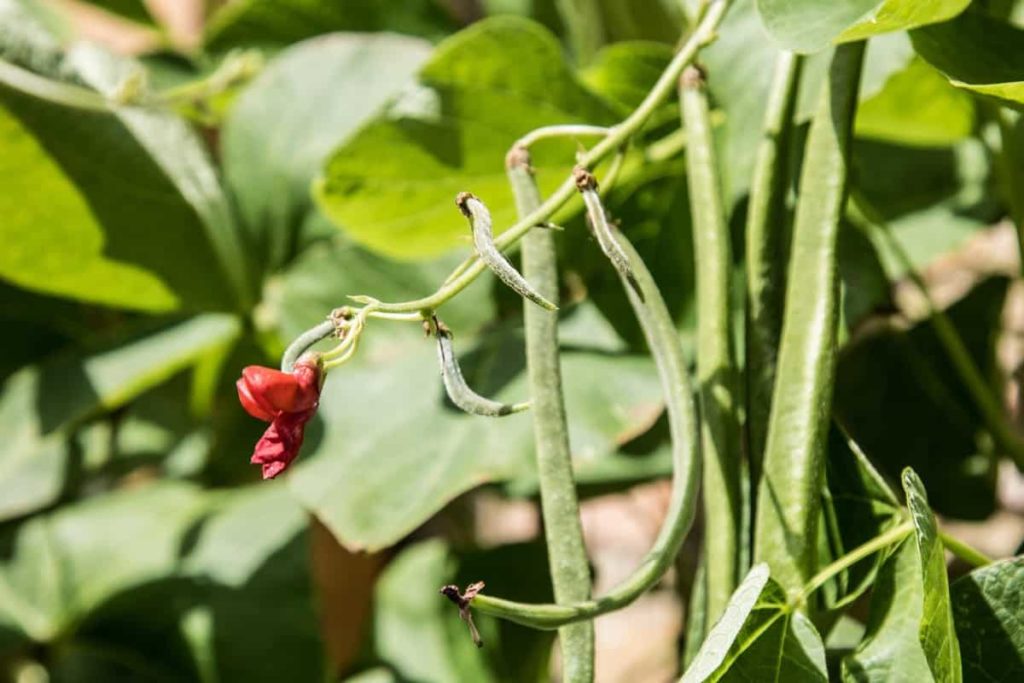
What grows well with Green Beans?
- Great companions for Beans include Carrots, Cabbage, Brussel Sprouts, Celery, Kale, Strawberries, Swiss Chard, Tomatoes, Lettuce, Peas, Cauliflower, Parsley, Spinach, and Savory. In addition, cucumber, eggplant, and radish all grow well with Green Beans. Each of these plants encourages strong growth.
- Marigold plants are great companion plants in the garden as they repel many pests. For Green Beans, they repel the Mexican Bean beetle. They also suppress nematodes in soil from attacking roots. Beans and Potatoes are also fantastic pairs because Bean plants repel the Colorado potato beetle, and potato plants repel the Bean beetle.
How many Bean seeds are in a hole?
- Drop two seeds per hole so that they fall about an inch apart and are two inches deep. Sowing first a week before your last expected frost date, then continue sowing every three or four weeks until midsummer.
- Seeds planted very deep in soil can grow in weak seedlings or fail to grow. If it is buried far below the soil surface, the seed cannot get the light it needs to sprout.
How deep are the roots of the Bean?
- Pole and Bush Beans usually have a root ball that extends from about 18 to 24 inches in the ground. However, deep feeder roots can reach 36 to 48 inches in the soil. Green Bean seeds need light to grow. You can just place them on the soil surface and gently press them to ensure good soil contact. Do not cover them with soil. Most of them are small seeds, and only a few of them are popular for vegetable gardens.
- The roots of the Beans are shallow, and frequent shallow tillage and hoeing are necessary to control small weeds and grasses. Since the root system in Bean plants is quite weak, deep, close cultivation injures plant roots, delays harvesting, and reduces production.
Do Green Beans need a trellis?
- Since Bush Beans are short and strong, they do not need special support, while Pole Beans need a strong trellis or Bamboo Poles to grow up.
- To stake the Beans, the trellis must be 5 to 6 feet high. When using a trellis as Pole Bean support, plant the Pole Beans about 3 inches based on your trellis. Bush Beans grow compactly (up to about two feet long), and structures like trails do not require extra help. Pole pods grow as they climb vines that can be 10 to 15 feet long and need a trellis or stack.
In case you missed it: Beans Seed Germination, Time, Temperature, Process
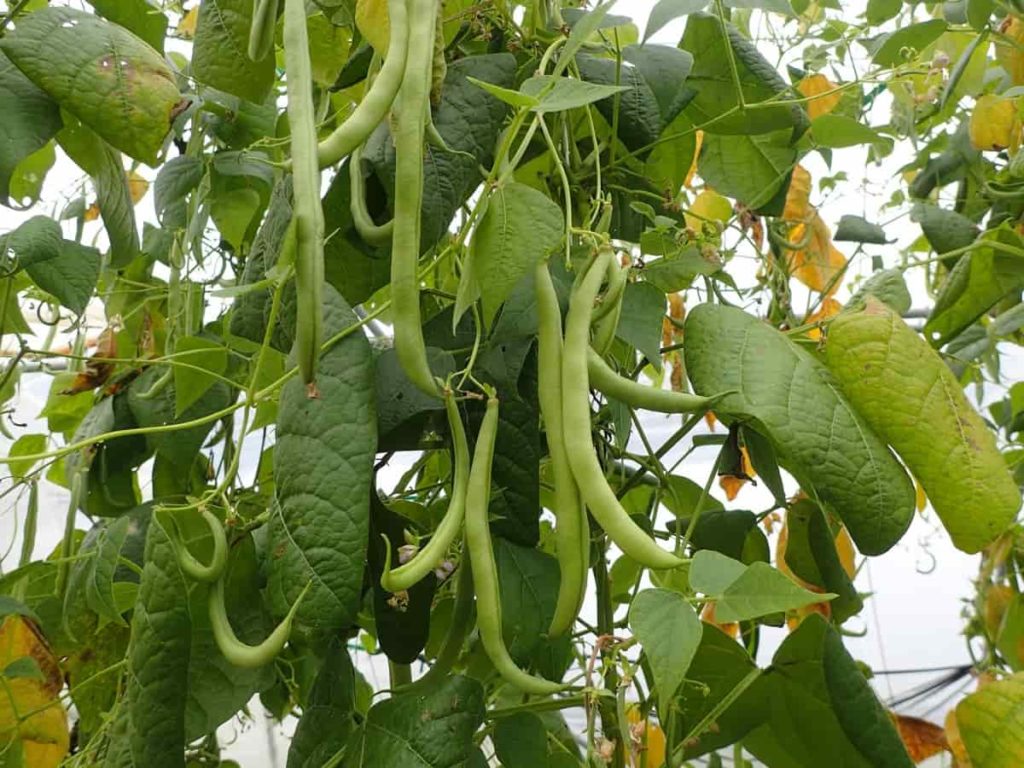
Why don’t My Green Beans have flowers?
- Age is a factor when Beans have no flowers. Unlike other plants that may set blooms continuously in the early part of the growing season, Beans usually need to reach maturity before blooming. However, if your plants are still small, they may only need more time.
- Green Beans have complete flowers (with both male and female parts) and are considered pollinated themselves. This means that they do not need insect-like pollinators to produce Beans. However, potassium fertilizer is needed to help initiate flowering.
What’s the best fertilizer for Green Beans?
- Beans need small amounts of calcium, manganese, and iron. If you modify the soil annually with compost or manure, your soil probably contains a fair amount of these nutrients. Beans are light feeders. They do not need much fertilizer. It is easy to mix a light dose of manure in two to three inches over the soil on the day or day before planting and give them only about all these nutrients.
- Green Beans prefer slightly acidic soil with a pH of about 6.5. Soil testing for a more accurate recommendation of lime and fertilizer requirements. In the absence of soil tests, add 2 kg of 5-10-15 fertilizer per 100 feet of row.
What should not be planted near Beans?
- Just as there are beneficial crops for planting with Beans, so are other plants to avoid. Unfortunately, the Allium family does neither Pole nor Bush Beans any favors. Members like Chives, Leeks, Garlic, and Onions emit an antibacterial that kills bacteria on the roots of Beans and prevents their nitrogen-fixing.
- Pole Beans and Bush Beans share all the recommendations of the same companion plant except Beetroot. Like Corn, Sunflowers look like an ideal Pole for the Pole Beans to climb and grow straight. Sunflowers, however, leave behind a chemical compound that prevents the growth of Beans, making them incompatible plants.
Is Epsom salt good for Green Beans?
- Epsom salt can temporarily increase magnesium levels in the soil. However, Beans usually grow with the average level of magnesium in the soil and are not required to use Epsom salt.
- Epsom salt helps improve blooming and enhances the plant’s green color. It can even help plants grow Bushy. Epsom salt comprises hydrated magnesium sulfate (magnesium and sulfur), essential for healthy plant growth.
What kind of soil do Beans like?
Beans, whether Bush or Pole, do not require a lot of soil and grow very well in limited spaces. Beans thrive best in slightly acidic to neutral soil, with pH between 6 and 7. Clay or loam is better for producing Beans than sandy soil, although good drainage is essential. You can use well-rotted manure or compost in planting to enhance soil organic matter. Beans grow best throughout the sun, which is well drained and applied to warm soil. While Pole Beans need to be trellising, Bush Beans can grow without support.
In case you missed it: Growing Runner Beans in Pots from Seeds – A Full Guide
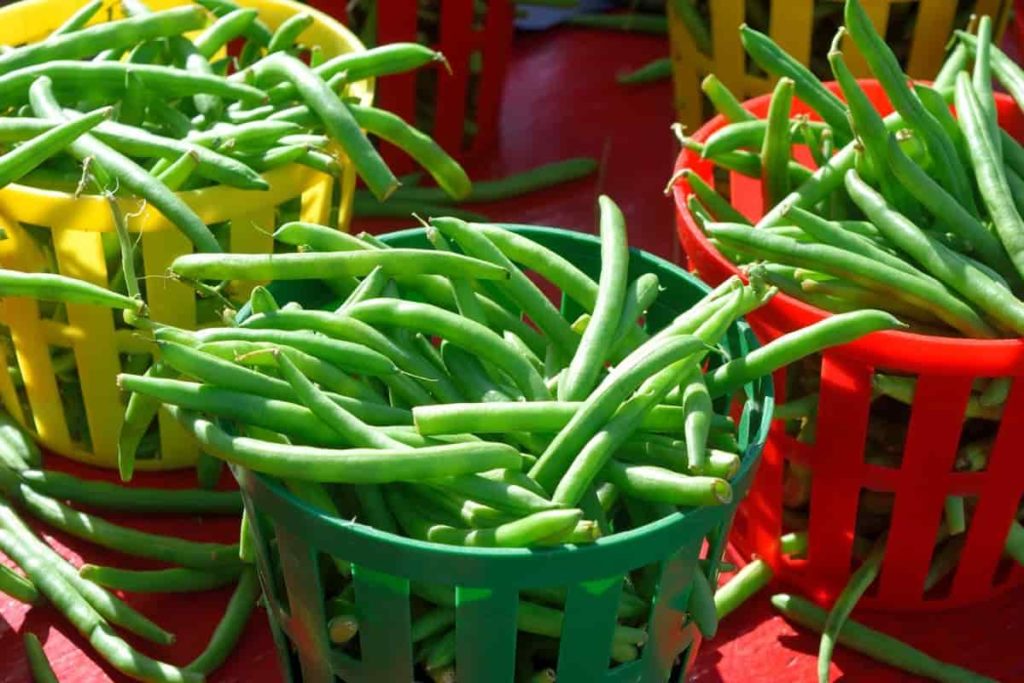
How can I increase the yield of my Green Beans?
The early plantation is the way. Early planting not only stops light but also spreads the reproductive period. It produces more Beans and eventually more production. Planting full-season varieties can boost the benefits of early plantings. Light, sandy, and manure-rich, well-drained soil is ideal for growing Beans. Work compost 6 inches above the planting bed.
Conclusion
Green Beans grow best in well-drained soil and with a lot of sunlight. Green Beans are one of the most loved, easily grown, and everGreen vegetables you can grow in your garden. Green Beans can also be grown in very limited space, which is incredibly productive. This article will help you solve all the questions about growing Green Beans.
- Growing Gold: Essential Techniques for Planting Pineapples
- How to Make Kalanchoe Plant Bushy: Home Remedies and Solutions
- 11 Reasons Why Your Gardenia is Not Blooming: Home Remedies and Solutions
- Eco Elegance: The Guide to Designing a Drought-Tolerant Landscape
- Gardening on a Slope: Strategies for Hillside Landscaping
- Nourish and Flourish: Top Organic Mulches for Thriving House Plants
- Everything You Want to Know about Indian Mogra Flower: Discover Uses and Growing
- Green Thumb Success: Expert Tips for Cultivating Greenhouse Pumpkins All Year Round
- Maximize Growth & Flavor: The Ultimate Guide to Companion Planting in Herb Gardens
- How to Control Rhododendron Problems Naturally: Home Remedies and Organic Ways to Fix Them
- Natural Magic: The Remarkable Benefits of Cinnamon for Plants
- Best Steps to Revive Dying Tulip with Natural and Organic Treatment
- 10 Reasons Why Your Angel Trumpet is Not Blooming: Remedies and Treatment
- How to Fix Periwinkle Leaf and Flower-Related Problems: Natural Remedies and Solutions
- How to Fix Zinnias Leaf and Flower Problems: Discover Natural and Home Remedies
- Organic Steps to Induce Lemon Tree Flowers: A Comprehensive Guide
- Bloom Booster: Crafting the Perfect Homemade Bougainvillea Fertilizer
- Optimizing Growth: A Guide to Applying NPK Fertilizer for Potted Plants
- 10 Best Homemade Fertilizers for Rubber Plant: DIY Recipes and Application Method
- How to Boost Female Pumpkin Flowers: Effective Steps for More Flowers and High Yields
- Transform Your Indoor Garden: Top Benefits of Pink Salt for Houseplants
- 10 Best Homemade Fertilizers for Peacock Plants (Calathea): Easy DIY Guide
- Unlock Blooms: 9 Reasons Why Your Potted Chrysanthemum is Not Blooming
- 8 Reasons Why Your Potted Hibiscus is Not Blooming: Fix it with Simple Solutions
- Unlock Blooms: 9 Key Reasons Your Potted Frangipani Won’t Flower
- 10 Reasons Why Is My Ice Plant Not Blooming: Remedies and Treatment
- 10 Reasons Why My Potted Hydrangea Not Blooming: Treatment and Remedies
- 10 Reasons Why is My Wisteria Not Blooming: Remedies and Treatment
- 10 Reasons Why is My Goldfish Plant Not Blooming: Remedies and Treatment
- Maximize Your Space: Ultimate Guide to Balcony Gardening with Grow Bags
- 10 Reasons Why Your Iris is Not Blooming: Remedies and Treatment
- 10 Reasons Why Your Anthurium Plant is Not Blooming: Treatment and Remedies
- 10 Reasons Why Your Aquaponic Plants Are Not Flowering: Remedies and Treatment
- 10 Reasons Why Your Agapanthus is Not Flowering: Remedies and Treatment
- Ultimate Guide to Brown Turkey Fig: Steps to Growing Brown Turkey Figs
- How to Grow Acai Berry: Propagation, Planting, and Care